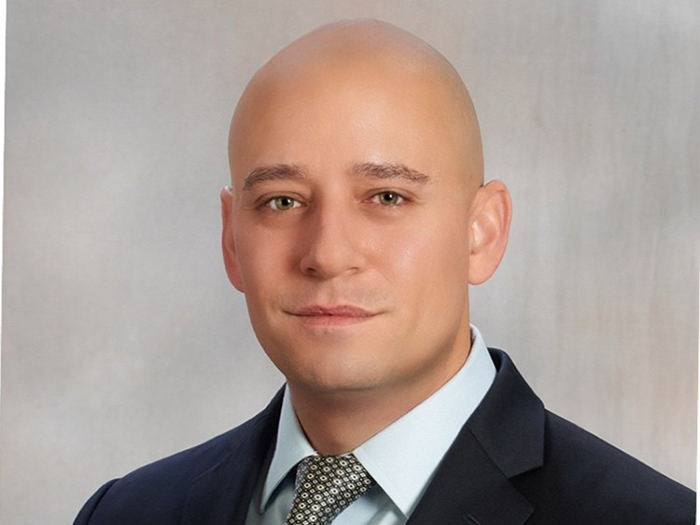What’s Driving the M&A Uptick in Health Care and How Health Systems Should Approach Their Next Deal

Ask any doctor, nurse or provider, and you’ll likely hear the same message: The number one reason they joined the medical profession was to help people.
Nothing has tested the laurels of these workers more than the pandemic we’ve faced the last few years, and nothing else has tested the limits of the health care sector.
Hospitals and other health care facilities have had to adjust to accommodate the influx of patients while also looking for ways to provide care to their non-COVID patients. Telehealth and other telemedicine services soared. More patients are turning to in-home care versus nursing facilities. Nurses, nurse practitioners and other non-physicians have had the opportunity to step up as the need for trained medical professionals grew.
And merger and acquisition deals are reaching new heights.
“M&A has been a constant over the last several years,” said Monica DiCesare, chief underwriting officer, liability products, IronHealth, Liberty Mutual Insurance. “We’re going to continue to see this desire for organizations to align and grow as health care looks for ways to reduce costs and improve access to care.”
By 2021’s end, the health care industry saw almost 3,000 M&A deals, a 25% increase compared to 2020, according to law firm Epstein Becker & Green. DiCesare did note there has been a slow down in deals in 2022 so far, but we’re still likely to see facilities continuing on this path of expansion via M&A.
What’s Driving Deals
COVID no doubt sparked increased M&A in the health care sector, as hospitals and smaller health care organizations felt the pinch of shutdowns and sickness. But the pandemic only acted as an exacerbating force.

Monica DiCesare, chief underwriting officer, liability products, IronHealth, Liberty Mutual Insurance
“Prior to the pandemic, [we saw] rural community hospitals trying to keep up with the medical advances, whether it was technology or purchasing the type of equipment they needed to be able to service and not transfer patients to either integrated delivery or academic facilities,” said Audrey Greening, chief broking officer, Aon.
“Those facilities really struggled as standalone organizations and became sort of a target for larger health care systems to acquire.”
Rural community hospitals have long felt a unique pressure even before the pandemic. Patients often have to log both miles and hours to get to these facilities, and at the same time, these smaller health organizations do not always have the resources or equipment needed to provide care like their larger counterparts do.
Large health care systems looking to expand their reach into these more rural communities see opportunity in acquiring these spaces.
Another trend driving M&A in health care is a need to create synergy and operational efficiency.
“Health care is like the perfect storm of complex billing, complex staffing, complex operations,” said Les Williams, co-founder and chief revenue officer, Risk Cooperative, and a prolific Risk Insider for Risk & Insurance®.
“Focusing on operations, it goes beyond patient delivery and making sure a patient’s medical chart is being followed and they’re being processed correctly,” he added. Facilities want their operations to be as clean and clear as possible, and one way to create that synergy is through merging with operations that are already ahead of the curve.
Related Reading: An Uptick in Health Care M&As Is Just What the Doctor Ordered. Here’s One Risk Expert’s Prescription
Safety is a big proponent of operations these days as well. With mass shootings on the rise and hospitals considered soft targets, some are seeking out active shooter policies and other means of boosting security procedures. That could mean looking at what other operations are doing and partnering with them through M&A.
Another trend is a need to expand operations. Health care facilities are often looking to broaden their scope of practice and extend services, and they have one of two options to choose from: start from the ground up or merge with a facility already doing what they want to do.
“They can build up their operations themselves or they can go out and see what practice is already established and doing what they want to do and offering specialized care,” Williams said.
Further, DiCesare said in addition to expanding operations, health care systems are looking to M&As to “improve financial viability, reach strategic goals. It becomes more difficult for small operations to compete and thrive in this environment, especially with payment models changing all the time,” she added.
Who’s Behind the Handshake
One interesting aspect of the M&A uptick, even before the pandemic drove increased activity, is the amount of private equity firms looking to spark deals.
“Between 2003 and 2017, there were 42 private equity deals to purchase hospitals or hospital systems,” said Williams. “And this continues through today.
“Forty-two private equity deals doesn’t sound a lot, but it encompass 282 hospitals in 36 states. It’s profound the impact that private equity M&A deals have had,” he said.
According to Bain & Company, $151 billion of private equity surged into health care in 2021. Global deals soared 36% compared to 2020, with a total of 515 altogether.
“There is a significant amount of merger/acquisition activity because of the private equity money behind these firms, specifically with staffing agencies and other organizations within the allied health space,” Greening said. “They are looking for opportunities to invest, and health care can be profitable for these private equity firms.”
As the saying goes, cash is king. Having that kind of funding for facilities, particularly ones in more rural settings, has proven a huge benefit for the health care sector and the people it services.
“A lot of hospital systems were struggling around the ropes because of COVID, but this cash infusion they got from private equity firms was a savior to them,” Williams explained. “A lot of hospitals didn’t close, because they were in a hospital system that was bought.”
Williams equated health care to insurance in that it is a vital component of our lives. Society could not function without either, and that has made health care M&A very appealing to private equity firms across the globe.
Risk and Reward
Hospitals and health care facilities are facing unprecedented times coming out of the pandemic. A labor shortage impacting professional liability claims, workplace violence threats increasing, telehealth liability claims gaining traction and more — the risks these facilities face are vast.
An M&A deal can go a long way in improving care, from expanding services to enhancing staff-to-patient ratios.
“To remain competitive,” DiCesare said, “hospital systems turn to acquisitions as one way to solve some of their issues. Acquiring organizations increase patient volumes and build economies of scale, all of which help reduce costs on goods and services and create better leverage with payers and vendors.”
There can be an immediate technology upgrade, too, when two systems come together, though, as DiCesare warned, that can also open up facilities to risk: “Organizations are not always using the same technology,” she said.
“There needs to be integration of those technology and IT systems. If it’s not done right, that can cause information to be lost or not communicated to the right people. That can be fatal in health care if test results or lab work isn’t communicated at the right time.”
Outside the system itself, communities reap reward when hospital systems come together.
“Communities are very attuned to their health care system and are very passionate about having that presence in their space,” said Greening.
“From a medical technology and medical advancement standpoint, looking at the continuum of the wellness of a patient from birth to death, [acquiring] larger health care systems and academic facilities can bring in their continued research and clinical trials to rural areas. That can impact the community’s life expectancy and quality of life.”
Further, Greening said, the infusion of capital from these health care systems can benefit the community. There’s a potential for career opportunities and advancement for health care providers as well.
Thoughts for the Insurance Industry to Ponder
With health care’s increased appetite for deals, the insurance industry also has a potential to benefit. According to Williams, he believes hospital systems and insurers will work together even more as M&A continues to drive through the industry.
“The payer-provider model, where it’s all in-house, I think that’s the future,” he said.
Related Reading: Why Payer-Provider Networks Will Help Health Care Flourish Post COVID-19
Private equity firms, Williams posits, will drive this trend. Because of the complexity that can come from hospital coding and billing, private equity firms that are buying hospital and health care organizations will likely turn to single insurance providers to come in-house. There are already examples of this happening, like Kaiser Permanente, where all insurance is handled by Kaiser itself.
“If I were an insurance provider,” he said, “I would start talking to some of these private equity firms and inquiring about how do we get some type of exclusive relationship within certain hospitals.”
He added that he does not anticipate that one insurance would be the sole insurer for an entire private equity’s portfolio; instead, he believes there will be a balance where an insurer is a sole provider on a handful of hospitals that make the most economic sense for the areas served.
“At least, that’s my crystal ball of what I think is going to happen,” he said.
Greening added that with this uptick in M&A, while insurance could see reward, the industry must also be on top of the changes health care systems are going through.
“Underwriters have to ask a lot more questions. And they are, specifically about claims and about exposure information. They need to make sure their client can explain the benefits of the acquisition to the overall community, their due diligence process. They really need to take a deep dive into any claims,” she said.
“All of those are areas where underwriters will want the client to focus.”
So You Want to Make a Deal
At the end of the day, the most important thing for health care systems to remember before enacting an M&A deal is to review its due diligence process and stay on top of the merging facilities’ exposures, claims and other risk areas.

Les Williams, chief revenue officer, co-founder, Risk Cooperative
“The due diligence process is really key to understanding what the risks are and then how to address them. One thing I would add, it’s really important to get the risk and insurance folks involved early in the process as well,” said DiCesare.
“Sometimes the insurance is just an afterthought, but the organizations will ultimately need to determine how to deal with prior liabilities of the organization being acquired, and also how they’re going to handle coverage going forward.”
Risk management at both facilities should be brought together as well, in order to review both enterprises’ exposures or open claims, and the risk team can also help provide communication tools to employees on both sides of the M&A in order to curb any feelings of wariness or potential layoffs.
DiCesare added, “Most important is to approach the merger with a learning attitude and open mindset. A new team brings new ideas and solutions that can benefit the entire organization.” &










